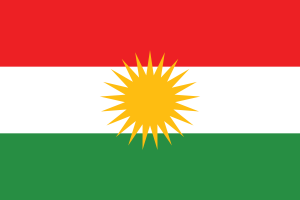Language/Central-kurdish/Grammar/Pronouns
Hi Central Kurdish learners! 😊
In today's lesson, we will be discussing pronouns in Central Kurdish. Pronouns are an important part of any language, and Central Kurdish is no exception. We will look at the different types of pronouns, how they are used, and how to form them correctly. By the end of this lesson, you should have a good understanding of Central Kurdish pronouns.
Types of Pronouns
Pronouns can be divided into two main categories: personal pronouns and demonstrative pronouns. Personal pronouns refer to people or things, while demonstrative pronouns point to specific people or things. Let's take a closer look at each type of pronoun.
Personal Pronouns
Personal pronouns are used to refer to people or things. In Central Kurdish, there are three types of personal pronouns: subject pronouns, object pronouns, and possessive pronouns.
Subject pronouns are used when the pronoun is the subject of the sentence. For example: I am going to the store.
Object pronouns are used when the pronoun is the object of the sentence. For example: She gave it to me.
Possessive pronouns are used to show ownership. For example: That is my book.
The table below shows the subject, object, and possessive pronouns in Central Kurdish:
| Subject | Object | Possessive |
|---|---|---|
| ez | mî | min |
| tu | te | tî |
| î | î | î |
| em | ji bo wan | ji bo wan |
Demonstrative Pronouns
Demonstrative pronouns are used to point to specific people or things. In Central Kurdish, there are four types of demonstrative pronouns: this, that, these, and those.
This and that are used to refer to singular nouns. For example: This is my book.
These and those are used to refer to plural nouns. For example: Those are my books.
The table below shows the demonstrative pronouns in Central Kurdish:
| This | That | These | Those |
|---|---|---|---|
| ev | vê | evan | vêyan |
Forming Pronouns
Now that we have looked at the different types of pronouns, let's take a look at how to form them correctly.
When forming personal pronouns, you need to take into account the gender and number of the noun being referred to. For example, if you are referring to a female person, you would use the feminine form of the pronoun.
When forming demonstrative pronouns, you need to take into account the distance of the noun being referred to. If the noun is close to the speaker, you would use the near form of the pronoun. If the noun is far from the speaker, you would use the far form of the pronoun.
The table below shows the forms of the pronouns depending on gender and number:
| Masculine | Feminine | Plural |
|---|---|---|
| ez | ez | em |
| tu | tu | te |
| î | î | î |
| ev | evî | evan |
| vê | vê | vêyan |
Conclusion
We have now looked at the different types of pronouns in Central Kurdish and how to form them correctly. Pronouns are an important part of any language, and it is important to understand how to use them correctly. With practice and dedication, you will soon be able to use pronouns with ease.
If you have any questions, please ask them in the comments section below.
Feel free to edit this wiki page if you think it can be improved. 😎

